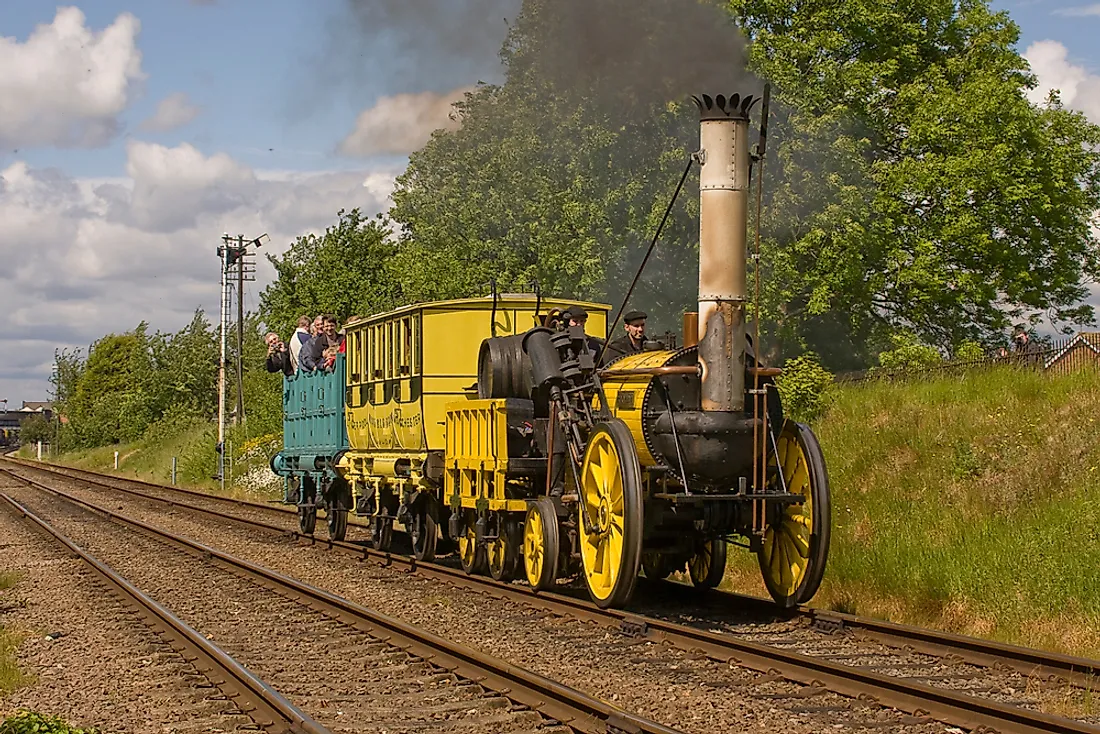Who Invented the Railroad?

The development of railroad is considered one of the most important catalysts of the Industrial Revolution. The railroad has evolved from what it was then to what it is today due to the involvement of many people. To appreciate the benefits the railroad has brought to many people from different parts of the world, it is necessary to acknowledge the person who invented it.
Who Invented the Railroad?
George Stephenson invented the first steam locomotive in Great Britain. He used the knowledge of steam technology to construct the first locomotive. Therefore, he is credited for the invention of the first railroad. The first locomotive engines that were used in the United States were acquired from George Stephenson Works. The railroads and locomotives in America were imported from Great Britain.
Early Life and Career
George Stephenson was born on June 9, 1781, near Newcastle, to a father who worked as an engineman in a coal mine. His father’s profession could have possibly had an impact on Stephenson’s successful invention. Stephenson began working at the mine where his father worked as a teenager. He only learned how to write and read during his free time from the coal mine. At the mine, Stephenson gained experience in operating steam engines and also worked in many other coalmines situated in northeast England and Scotland.
In 1814, Stephenson invented a locomotive and a safety lamp that was used to make coal mining easier. In 1821, Stephenson was appointed as an engineer for the Stockton and Darlington railway. He was also appointed as the chief engineer during the construction of the Liverpool to Manchester railway line.
Further Developments
In 1829, a competition known as the Rainhill Trials were held by the Liverpool & Manchester Railway with the purpose of acquiring the best locomotive to move heavy loads over long distances. A number of people participated in the completion which attracted over a thousand spectators. Stephenson, and his son George, participated in the Rainhill Trials. The Stephensons' locomotive, which was referred to as the ‘Rocket’, emerged the winner of the competition. The 'Rocket’ managed to move loads at a speed of 36 miles per hour.
The success of the ’rocket’ stimulated the laying up of railway lines in different parts of the country. From the works of Stephenson, the railroad and the railway development grew to what it is today. The people who worked in the industry most definitely acquired their inspiration from the works of Stephenson.
The development of the railroads was not fully supported. Some people, such as the opposition businessmen and religious leaders were against the development. However, their pleas for the government to abandon the development were silenced when the benefits of the railroad became evident to all people.
Significance of the Invention of the Railroad
The invention of the railroad benefited countries that embraced it. The Industrial Revolution, which is known to have taken off first in Great Britain, was boosted by the invention of the railroad. The industrial revolution would not have been successful if the railroad was not invented. The railroad came in handy in transporting manufactured goods to the markets, raw materials to the industries, and industrial workers to their workplace.
The countries that embraced the railroad after Great Britain, such as the United States, experienced a number of social, economic, and political changes. In America, the importation of the Railroad from Britain promoted the development of other infrastructures such as depots, bridges, and roads that connect to the railroads.











